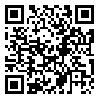Volume 28 - Supplementary
IBJ 2024, 28 - Supplementary: 429-429 |
Back to browse issues page
Download citation:
BibTeX | RIS | EndNote | Medlars | ProCite | Reference Manager | RefWorks
Send citation to:



BibTeX | RIS | EndNote | Medlars | ProCite | Reference Manager | RefWorks
Send citation to:
Afshar M, Aghaei A, Nuri B, Moasses Ghafari B. Thyroiditis Incidence and COVID-19 Epidemic in Sanandaj, Iran: A Time-Series Analysis. IBJ 2024; 28 :429-429
URL: http://ibj.pasteur.ac.ir/article-1-4866-en.html
URL: http://ibj.pasteur.ac.ir/article-1-4866-en.html
Abstract:
Introduction: This study aimed to investigate the potential correlation between reported cases of thyroiditis and the COVID-19 pandemic in Sanandaj, Iran, using time-series analysis techniques. The data was collected from the two nuclear medicine centers in Kurdistan province, which are the only centers and the main referral facilities for nuclear medicine.
Methods and Materials: Based on thyroid scan findings from these two centers in 2019 and 2020, individuals diagnosed with thyroiditis were included. Time-series analysis, cross-correlation analysis, and analysis of lagged effects examined the temporal patterns and potential correlations between thyroiditis cases and COVID-19 data.
Results: The time-series analysis employed an autoregressive integrated moving average (ARIMA) model with a lag length of 3. While the cross-correlation analysis showed positive and significant correlations at lags 1 to 5, with the highest cross-correlation coefficient of 0.4674 (p = 0.05) at lag 3, suggesting a potential 3-month optimal lag, this lag was not meaningful. The analysis of lagged effects did not reveal a statistically significant relationship between the two variables (F(6, 27) = 1.18, p = 0.3444), indicating that the trends of thyroiditis and COVID-19 cases are not related and COVID-19 cannot predict subsequent thyroiditis cases.
Conclusion and Discussion: Despite clinical and observational reasoning suggesting a potential association between COVID-19 and thyroiditis, this study did not find strong evidence for a significant correlation between these two incidents in the population studied.

Methods and Materials: Based on thyroid scan findings from these two centers in 2019 and 2020, individuals diagnosed with thyroiditis were included. Time-series analysis, cross-correlation analysis, and analysis of lagged effects examined the temporal patterns and potential correlations between thyroiditis cases and COVID-19 data.
Results: The time-series analysis employed an autoregressive integrated moving average (ARIMA) model with a lag length of 3. While the cross-correlation analysis showed positive and significant correlations at lags 1 to 5, with the highest cross-correlation coefficient of 0.4674 (p = 0.05) at lag 3, suggesting a potential 3-month optimal lag, this lag was not meaningful. The analysis of lagged effects did not reveal a statistically significant relationship between the two variables (F(6, 27) = 1.18, p = 0.3444), indicating that the trends of thyroiditis and COVID-19 cases are not related and COVID-19 cannot predict subsequent thyroiditis cases.
Conclusion and Discussion: Despite clinical and observational reasoning suggesting a potential association between COVID-19 and thyroiditis, this study did not find strong evidence for a significant correlation between these two incidents in the population studied.

| Rights and permissions | |
 |
This work is licensed under a Creative Commons Attribution-NonCommercial 4.0 International License. |







.png)
